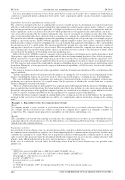Page 488 - SAIT Compendium 2016 Volume2
P. 488
IN 51 (3) Income Tax acT: InTeRPReTaTIon noTes IN 51 (3)
It is not a prerequisite for income to have been earned before a trade can be said to have commenced. South African courts have consistently drawn a distinction between the ‘trade’ requirement and the ‘income from trade’ requirements in section 20.*
Expenditure incurred in expanding an existing trade
The courts have interpreted the Act as requiring that a person’s taxable income be determined on a trade-by-trade basis with the overall taxable income being determined by aggregating the results from the separate trades,† subject to certain ring-fencing provisions such as those applicable to foreign assessed losses.‡ In the context of a company the trade-by- trade requirement can be seen from section 20(1)(b) which permits the set off against income derived from ‘any trade’ – ‘any assessed loss incurred by the taxpayer during the same year of assessment in carrying on any other trade either alone or in partnership with others, otherwise than as a member of a company the capital whereof is divided into shares’. The question arises whether expenditure incurred in expanding an existing trade of a speci c type (for example, property letting) is a pre-trade expense. In ITC 984§ the appellant company sought to deduct estate agent’s commission which it had incurred in securing a tenant for a building to be erected on land it had acquired for that purpose. The court held that the amount was not of a capital nature. The question whether the amount was a pre-trade expense was not considered and appears to have been accepted as a fait accompli. This was probably because the company was already carrying on a pre-existing trade of property letting and the expense in question was more related to the derivation of future rental income than for the purpose of developing an income-producing asset.
In Reef Estates Ltd v CIR¶ the taxpayer company carried on the business of letting property, and for this purpose held 10 properties, eight of which were township stands with the other two being farming properties. One of these properties, which consisted of a vacant stand 485, situated in an out-of-the-way side street, was purchased by the taxpayer in 1935. No income was derived from this site until 1948 when it was let as a parking site for motor vehicles at an annual rental of £15. The taxpayer had acquired the stand with the intention of building shops on it as an investment, and deriving rental from them. During the year in question, the taxpayer had incurred expenditure of £366 for rates levied on the stand by the local authority.
The taxpayer claimed a deduction for this expenditure, which the Commissioner disallowed. The court dismissed the appeal, and held –
‘that the expenditure had not been incurred for the purpose of earning the £15 of rental received, but primarily for the purpose of holding the stand as an asset to be used at a later stage for the purpose of earning income from buildings’.
The court held further that the expenditure was analogous to that incurred in the creation or equipment of an income- producing asset and was therefore of a capital nature. On the question of whether the vacant stand was a separate business, Rumpff J stated the following:**
‘The facts of this matter indicate that stand 485 was acquired and is still being held with the intention of building shops thereon and deriving rentals therefrom. It is being held in order that it may in future become an income-producing unit. Even if the other properties of the appellant company together are considered as one business (a point which we need not decide) it cannot be said that stand 485 has become quali ed to be regarded as part of that business.’
It follows that when a taxpayer expands an existing business by creating an asset for use in that business, the expenditure incurred on that asset before it is brought into use will be of a capital nature and not incurred in carrying on the existing trade.††
Preparatory activities
As noted in the Contour Engineering case already discussed, the court drew a distinction between the laying of plans and the commencement of preparatory activities, in so doing implying that the commencement of preparatory activities may constitute the carrying on of a trade. What sort of preparatory activities would signal the commencement of a trade? In order to answer this question it must be determined whether the taxpayer has an asset (income-earning structure) with which to trade. Much will depend on the facts and circumstances of the particular case.
In the case of a wholesale or retail outlet, the following extract from the Contour Engineering case provides some guidance:‡‡
* ITC 1679 (1999) 62 SATC 294 (o); ITC 1830 (2007) 70 SATC 123 (g).
† ITC 729 (1951) 18 SATC 96 (n); C v COT 1966 (3) SA 6 (RAD), 28 SATC 127.
‡ Paragraph (b) of the proviso to section 20(1).
§ (1961) 25 SATC 59 (c).
¶ 1954 (2) SA 593 (t), 19 SATC 153.
** At 156.
†† 345 F.2d 901 (4th Cir. 1965). See Interpretation Note No. 33 for more details on this case. ‡‡ At 456.
Example 1 – Expenditure before the commencement of trade
Facts:
A company intends to carry on trade as a television station but has not yet secured a television licence. There is no certainty that the television licence will be secured as the company has to apply for it alongside a number of competitors. The company incurs preparatory expenditure on staff salaries and training costs.
Result:
The expenditure is not incurred in carrying on a trade since the company does not yet have an asset with which to trade (amongst others, the television licence). See the United States case of Richmond Television Corp. v Commissioner†† which dealt with a similar situation.
480 saIT comPendIum oF Tax LegIsLaTIon VoLume 2


